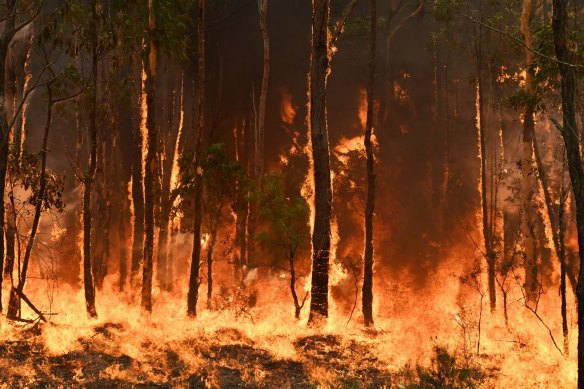From Evaluation to Action: Using Your BAL Report to Reduce Bushfire Ris
From Evaluation to Action: Using Your BAL Report to Reduce Bushfire Ris
Blog Article
How BAL Record Impacts Shrub Fire Defense Steps
In the world of bush fire defense, the Structure Attack Degree (BAL) record stands as a vital device that dramatically influences the safety and security and durability of buildings in fire-prone locations - BAL Report. The effect of a BAL analysis prolongs far past plain paperwork; it functions as the keystone for figuring out the ideal building requirements and fire security actions required to mitigate the threats presented by bushfires. As neighborhoods face significantly severe fire periods, understanding exactly how the BAL report forms these safety procedures comes to be vital for building contractors, homeowners, and policymakers alike
Comprehending the Bushfire Strike Degree

Significance of BAL Record Evaluation
Additionally, the BAL record evaluation works as a fundamental action in abiding by legal commitments and needs connected to bushfire protection. Neighborhood councils and authorities usually mandate the submission of a BAL report as component of the planning and building approval procedure to ensure that residential or commercial properties are effectively guarded versus bushfire threats. Stopping working to conduct a thorough BAL report analysis can result in insufficient defense steps, leaving buildings vulnerable to devastating bushfire occurrences.
Building And Construction Standards Based on BAL
A comprehensive understanding of the Bushfire Assault Level (BAL) allows home owners to apply building his comment is here criteria tailored to their certain risk account. Building and construction requirements based on BAL are important in reducing the effect of bushfires on homes. The BAL score classifies the prospective threat a residential property encounters during a bushfire on a scale from BAL-Low to BAL-FZ (Fire Area)
Executing Fire Protection Procedures
With the foundation of construction criteria based on Bushfire Strike Level (BAL) in place, the emphasis currently shifts in the direction of the practical implementation of fire protection procedures to strengthen residential Discover More properties versus bushfire risks. Passive measures include utilizing fireproof structure materials, installing ash guards on vents, securing gaps in roofings and wall surfaces, and keeping a clear space around the residential property free from combustible vegetation. By incorporating both passive and energetic approaches, residential or commercial properties can considerably decrease their susceptability to bushfire cases and enhance the safety and security of passengers.
Safeguarding Homes Against Bushfires
Successfully guarding homes against the harmful impacts of bushfires needs a detailed and positive method to fire security actions. In addition, securing spaces and vents to prevent ash invasion, as well as integrating fireproof doors and windows, can assist strengthen the home's protection versus bushfires. By welcoming an aggressive stance and integrating these safety procedures, property owners can substantially boost their chances of securing their homes against bushfires.
Conclusion
In final thought, the Bushfire Assault Level (BAL) report plays a crucial role in figuring out the required security procedures versus bushfires. By assessing the BAL, construction standards can be customized to mitigate the risks and ensure the safety of homes in fire-prone areas. Applying fire protection actions based upon the BAL record is vital in securing homes from possible bushfire hazards. It is necessary for home owners to focus on BAL assessments and follow recommended building and construction requirements to improve bushfire resilience.
In assessing bushfire danger to homes, understanding the Bushfire Assault Level (BAL) is a critical component for implementing reliable security measures. Generally, a clear understanding of the Bushfire Strike Level is essential for executing reference appropriate protection actions and mitigating the influence of bushfires on residential or commercial properties.

Report this page